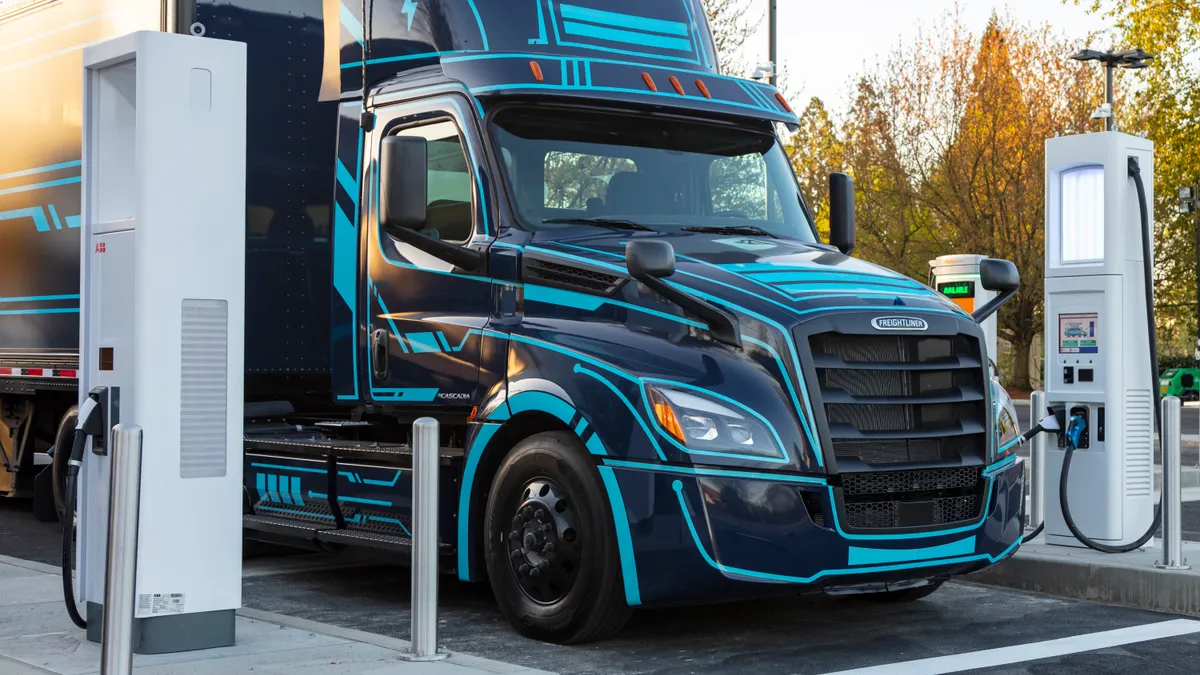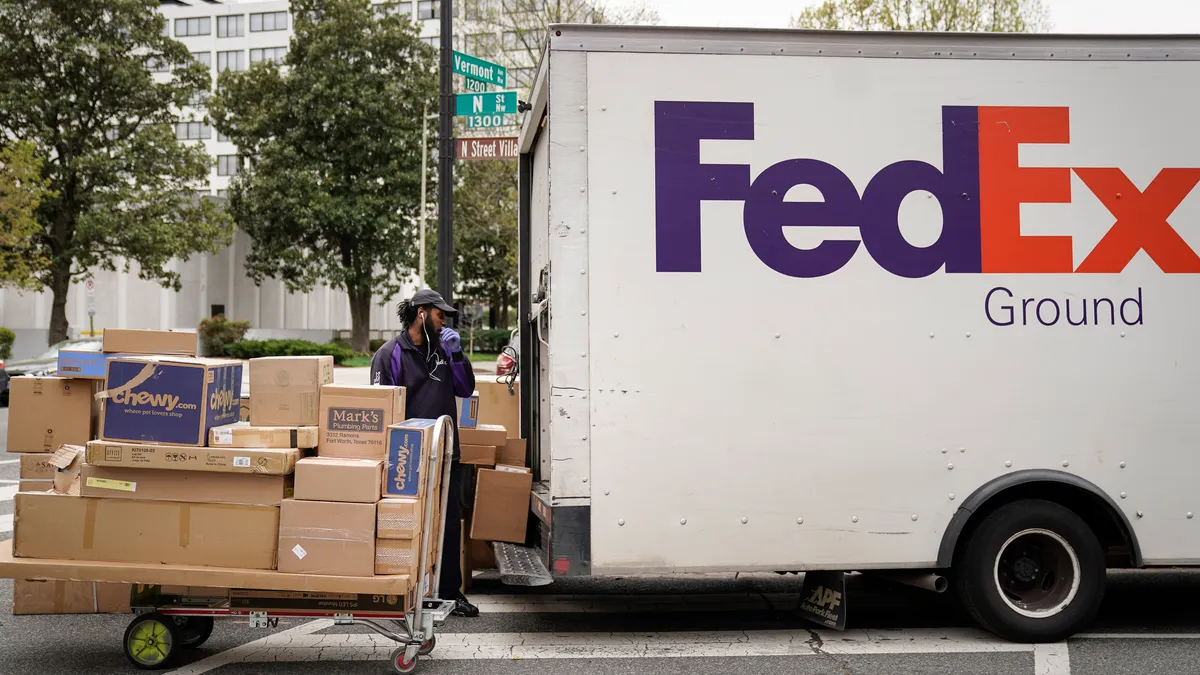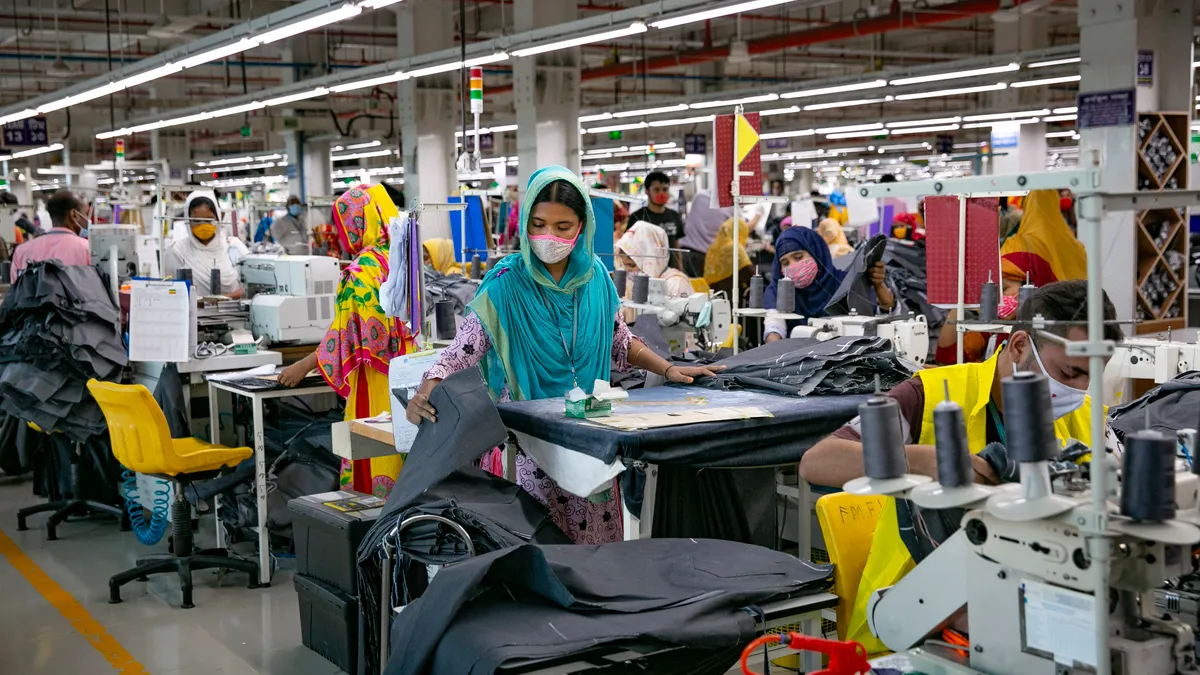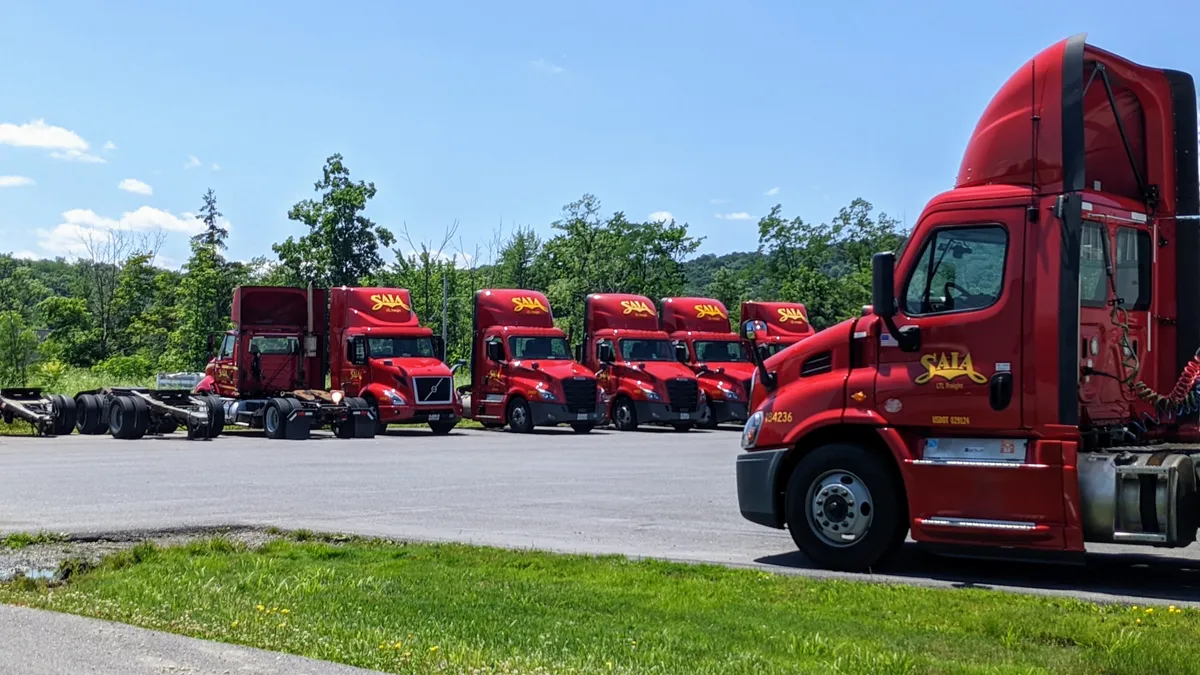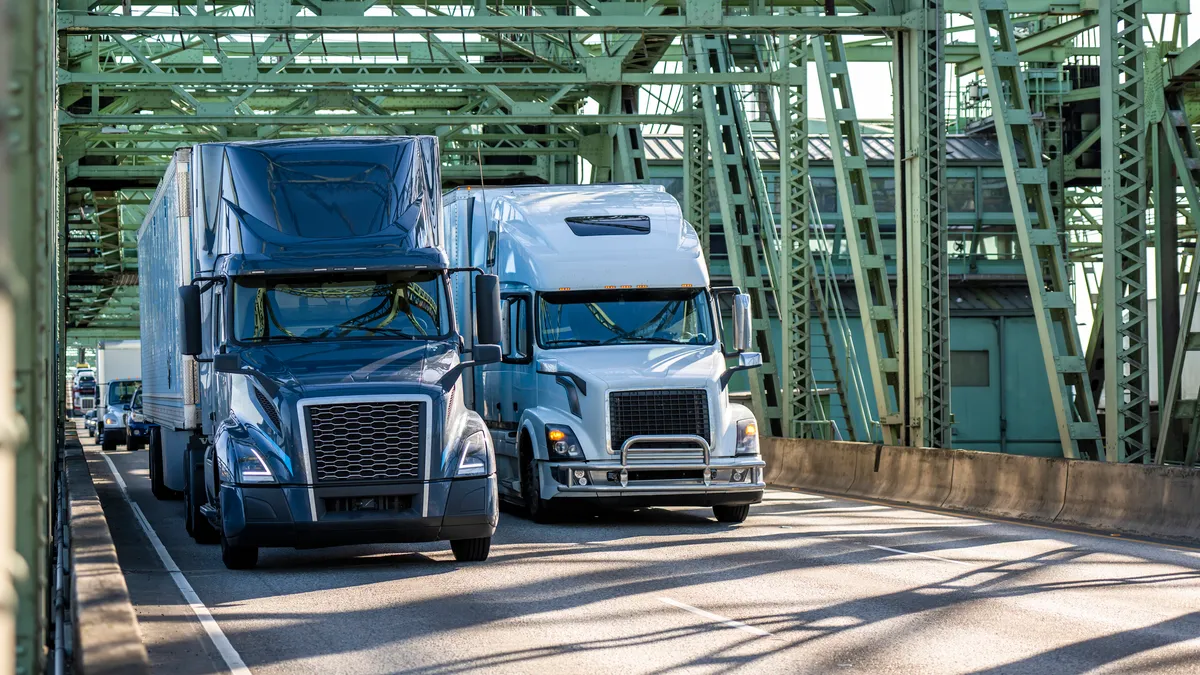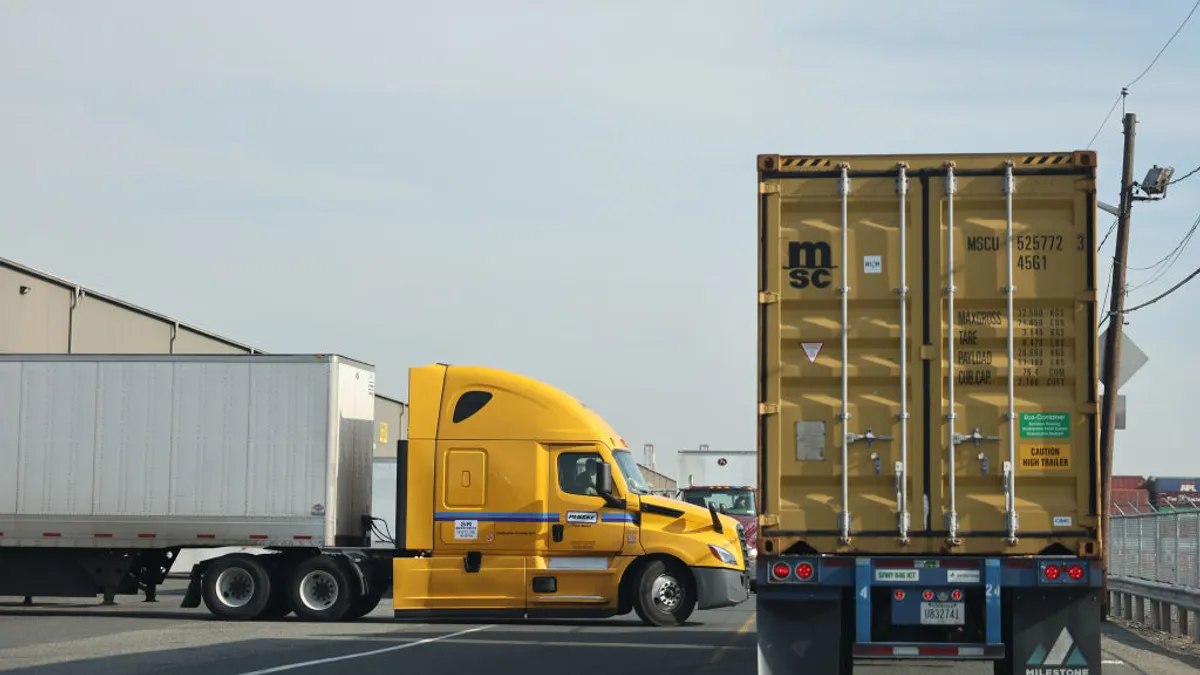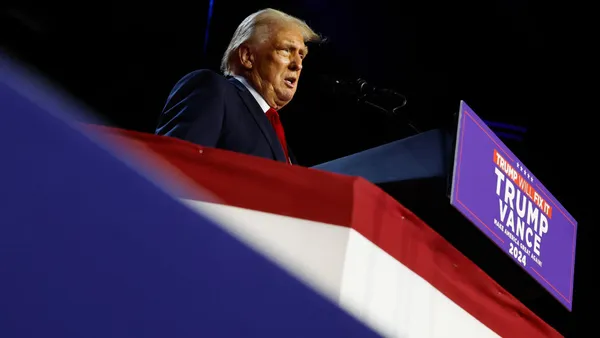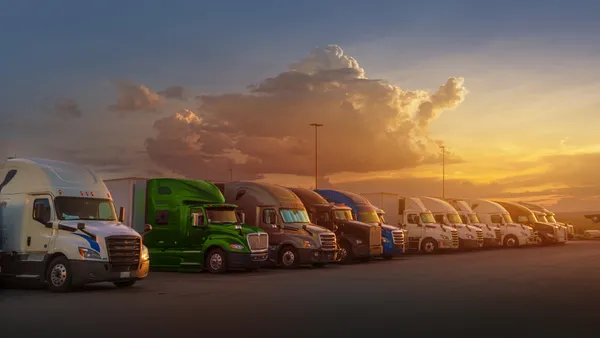Component shortages have rattled OEMs and fleets throughout the year.
Class 8 orders in November dropped 41% from the previous month to hit the lowest order total since 1995, according to FTR. Manufacturers are exercising caution and will continue to do so until semiconductor constraints ease.
Class 8 net truck orders in North America
While traditional combustion truck production is suffering under the chip shortage, so are electric trucks.
This story was first published in our sister publication, Transport Dive. Sign up here.
"There are many more chips going into [electric] trucks than combustion trucks," Frank Cavallaro, CEO at A2 Global, told Transport Dive.
While a traditional truck could require up to 500 chips, an electric one could require up to 5,000 — a tenfold increase, Cavallaro said.
Ongoing headwinds related to battery cells are also holding up electric vehicles. In October, Tesla's chief, Elon Musk, told investors the Tesla Semi was delayed yet again, this time until 2023. That's when Tesla "should be through our severe supply chain shortages," he said.
It's challenging enough in current conditions for fleets to procure a diesel-powered tractor. But the technology required for electric models makes component headwinds even more significant.
"Supply chain imbalances occur every day, but the chip imbalance is large enough to be on everyone's radar screen," said Cavallaro.
Chips for AC/DC
Most of the increased demand for chips in electric-truck production stems from the process of converting alternating current, or AC power, into direct current, or DC power. The DC power is then stored in the batteries and used to power the trucks.
That process is controlled by a converter box, which requires a large number of chips.
Additionally, EVs need chips for numerous components, Kevin Otto, chair of the Electrified Vehicle Task Force for the Technology & Maintenance Council, told Transport Dive.
"Communications, the dashboard, HVAC systems, the doors — all of them need chips," he said. "The shortage hits them all."
"Supply chain imbalances occur every day, but the chip imbalance is large enough to be on everyone's radar screen."

Frank Cavallaro
CEO at A2 Global
Even considering Tesla's battery constraints, semiconductors continue to be the component with the greatest prolonged scarcity, Anja Weinert, communications manager for Daimler Trucks North America, told Transport Dive.
DTNA has pre-production EV models on the road. Its eCascadia and eM2 have reached 500,000 real-world miles, including in test runs with Sysco. In September, Schneider announced plans to add 50 eCascadias to its intermodal operations in Southern California.
Usually, DTNA can simply order products and expect a delivery. Now, the OEM is "reaching far down" into its supply chain to plan for shortages alongside its suppliers, Weinert said. It's also teaming up to navigate current constraints and help keep parts flowing upstream.
"Our supply chain teams are constantly making magic happen for us, our dealers and, most importantly, our customers by securing the parts we need to build trucks," she said.
Ready to go in the long term
If component shortages stand to hamper the adoption rate of electric trucks at this stage, that could give production a boost in the long term.
"EVs might actually be in better shape because of the low volume of EV trucks in demand right now," said Otto. "Build rates are already much lower compared to combustion truck rates."
Otto suggested that, as a result, OEMs may take a strategy of limiting EV production in favor of traditional trucks in the short term.
"Right now the best applications for EV trucks are smaller models," he said. "In the meantime, fleets can look at alternatives to EVs to make their trucks more sustainable."
These options might include improved route optimization, hydrogen fueling and greater use of rail. But EV production will, eventually, get back on track.
"The supply chain is adjusted so that when the chips are available, truck makers will be ready," said Cavallaro.
In the meantime, communication remains key between OEMs and fleets. DTNA is working closely with dealers and customers to communicate about the status of orders that have been made, Weinert said.
Cavallaro said that this proactive approach is necessary in the age of parts shortages, especially for EV truck makers and buyers.
"The best thing you can do is exactly what we're all doing for the holidays this year," he said. "Get your orders in early because we're going to continue to see shortages into the near future, at least."
This story was first published in our sister publication, Transport Dive. Sign up here.


